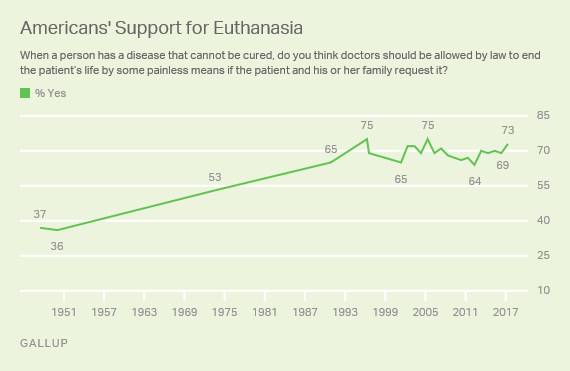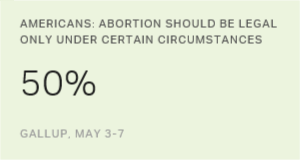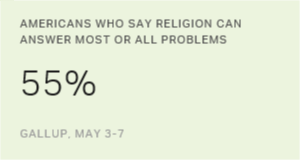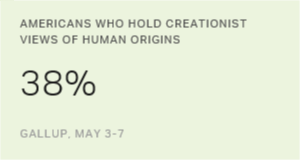Story Highlights
- 73% support euthanasia, highest level since 2005
- Liberals most supportive; weekly churchgoers least supportive
- A new high of 57% say doctor-assisted suicide is morally acceptable
WASHINGTON, D.C. -- As right-to-die legislation is under debate in many states, 73% of U.S. adults say a doctor should be allowed to end a terminally ill patient's life by painless means if the patient requests it. This is in line with the 69% to 70% Gallup has recorded since 2013, but much higher than support for euthanasia before 1990.

These data come from Gallup's annual Values and Beliefs poll, conducted May 3-7. Last month, the Nevada state senate voted narrowly to advance legislation that would allow terminally ill patients in the state the option to end their lives. Maine's House of Representatives rejected similar legislation that same week, however, after it barely passed in the state Senate.
According to the Death with Dignity National Center, five states and the District of Columbia currently have "death with dignity" statutes that "allow mentally competent adult state residents who have a terminal illness with a confirmed prognosis of having six or fewer months to live to voluntarily request and receive a prescription medication to hasten their inevitable, imminent death." The District of Columbia, however, could be barred from funding its recently passed law under President Donald Trump's proposed budget.
Support for euthanasia is nearly double what it was when Gallup first polled on the question in 1947, when 37% said it should be allowed by law. By 1973, a slim majority of 53% supported it. Since 1990, solid majorities of Americans have expressed support for euthanasia, ranging from 64% to 75%.
Smaller Majorities of Weekly Churchgoers, Conservatives Support Euthanasia
Gallup has found that people's views on the subject often differ based on their religious and political persuasions. A slim majority of weekly churchgoers (55%) support allowing a doctor to end a terminally ill patient's life through painless means upon request, whereas nearly nine in 10 adults who rarely if ever go to church say this should be allowed (87%).
The issue is somewhat less divisive among party and ideological groups. About nine in 10 liberals (89%) support euthanasia, compared with 79% of moderates and 60% of conservatives. Also, 81% of Democrats and Democratic-leaning independents as well as 67% of Republicans and Republican leaners say euthanasia should be allowed.
| Should be allowed | |||||||||||||||||||||||||||||||||||||||||||||||||||||||||||||||||||||||||||||||||||||||||||||||||||
|---|---|---|---|---|---|---|---|---|---|---|---|---|---|---|---|---|---|---|---|---|---|---|---|---|---|---|---|---|---|---|---|---|---|---|---|---|---|---|---|---|---|---|---|---|---|---|---|---|---|---|---|---|---|---|---|---|---|---|---|---|---|---|---|---|---|---|---|---|---|---|---|---|---|---|---|---|---|---|---|---|---|---|---|---|---|---|---|---|---|---|---|---|---|---|---|---|---|---|---|
| % | |||||||||||||||||||||||||||||||||||||||||||||||||||||||||||||||||||||||||||||||||||||||||||||||||||
| Attend church weekly | 55 | ||||||||||||||||||||||||||||||||||||||||||||||||||||||||||||||||||||||||||||||||||||||||||||||||||
| Attend church nearly weekly/monthly | 66 | ||||||||||||||||||||||||||||||||||||||||||||||||||||||||||||||||||||||||||||||||||||||||||||||||||
| Attend church seldom/never | 87 | ||||||||||||||||||||||||||||||||||||||||||||||||||||||||||||||||||||||||||||||||||||||||||||||||||
| Conservatives | 60 | ||||||||||||||||||||||||||||||||||||||||||||||||||||||||||||||||||||||||||||||||||||||||||||||||||
| Moderates | 79 | ||||||||||||||||||||||||||||||||||||||||||||||||||||||||||||||||||||||||||||||||||||||||||||||||||
| Liberals | 89 | ||||||||||||||||||||||||||||||||||||||||||||||||||||||||||||||||||||||||||||||||||||||||||||||||||
| Republicans/Republican-leaning independents | 67 | ||||||||||||||||||||||||||||||||||||||||||||||||||||||||||||||||||||||||||||||||||||||||||||||||||
| Democrats/Democratic-leaning independents | 81 | ||||||||||||||||||||||||||||||||||||||||||||||||||||||||||||||||||||||||||||||||||||||||||||||||||
| Asked of a half sample | |||||||||||||||||||||||||||||||||||||||||||||||||||||||||||||||||||||||||||||||||||||||||||||||||||
| GALLUP, MAY 3-7, 2017 | |||||||||||||||||||||||||||||||||||||||||||||||||||||||||||||||||||||||||||||||||||||||||||||||||||
Support for Doctor-Assisted Suicide Now Similar to That for Euthanasia
Since 1996, Gallup has asked a separate question about a practice related to euthanasia -- whether doctors should be allowed to assist a terminally ill patient living in severe pain "to commit suicide if the patient requests it." Currently, 67% say doctors should be allowed to do so. This is on the higher end of what Gallup has measured historically. Consistent majorities have expressed support for doctor-assisted suicide in Gallup's trend since the question was first asked in the late 1990s. The low point was 51% in 2013.

Americans have historically responded less favorably to the "doctor-assisted suicide" question than to the euthanasia item, but the gap has diminished in recent years. From 1996 through 2013, an average of 58% supported doctor-assisted suicide, while 69% supported euthanasia. Since then, the averages are 65% and 70%, respectively. The diminished gap could be a result of greater exposure to the issue as some states have passed "death with dignity" laws. Additionally, Americans have recently expressed more liberal views on a variety of issues.
It should be noted that, for many "death with dignity" advocates, semantics are important. According to the American Public Health Association, "Medical and legal experts have recognized that the term 'suicide' or 'assisted suicide' is inappropriate when discussing the choice of a mentally competent terminally ill patient to seek medications that he or she could consume to bring about a peaceful and dignified death." Americans, too, may see less of a distinction between euthanasia and doctor-assisted suicide than they have in the past.
Views on Moral Acceptability of Doctor-Assisted Suicide
Since 2001, Gallup has measured Americans' views on the moral acceptability of doctor-assisted suicide along with more than a dozen other issues.
In the latest poll, 57% of Americans say doctor-assisted suicide is morally acceptable -- the highest, by one percentage point, in Gallup's trend.

With 67% of Americans saying doctors should be allowed to assist terminally ill patients in committing suicide but 57% saying it is morally acceptable, some segment of the public thinks it should be legal even though they do not find it a morally acceptable practice.
Bottom Line
In the past year, death with dignity legislation has gone into effect in two states, California and Colorado, and legislation has been passed in the District of Columbia. Though the movement appears to have stalled at least temporarily with legislative roadblocks in Maine and Nevada, Americans' support for the practice remains high.
While Gallup has found that solid majorities support euthanasia in recent decades, the current level of support is on the high end of this trend.
Americans' views on euthanasia have evolved, generally becoming more liberal, and could shift further as states continue to debate a suffering patient's right to die. But support for euthanasia has not been a steady, upward climb; unique cases like those of Terri Schiavo and, more recently, Brittany Maynard, have influenced the national conversation. For the time being, more than two-thirds of national adults continue to support euthanasia -- with majorities in favor even among the least supportive groups, such as weekly churchgoers.
Historical data are available in Gallup Analytics.
Survey Methods
Results for this Gallup poll are based on telephone interviews conducted May 3-7, 2017, with a random sample of 1,011 adults, aged 18 and older, living in all 50 U.S. states and the District of Columbia. For results based on the total sample of national adults, the margin of sampling error is ±4 percentage points at the 95% confidence level. For results based on the half-sample of 518 national adults who were asked about euthanasia and the half sample of 493 national adults who were asked about doctor-assisted suicide, the margin of sampling error is ±5 percentage points. All reported margins of sampling error include computed design effects for weighting.
Each sample of national adults includes a minimum quota of 70% cellphone respondents and 30% landline respondents, with additional minimum quotas by time zone within region. Landline and cellular telephone numbers are selected using random-digit-dial methods.
View complete question responses and trends (PDF download).
Learn more about how the Gallup Poll Social Series works.




